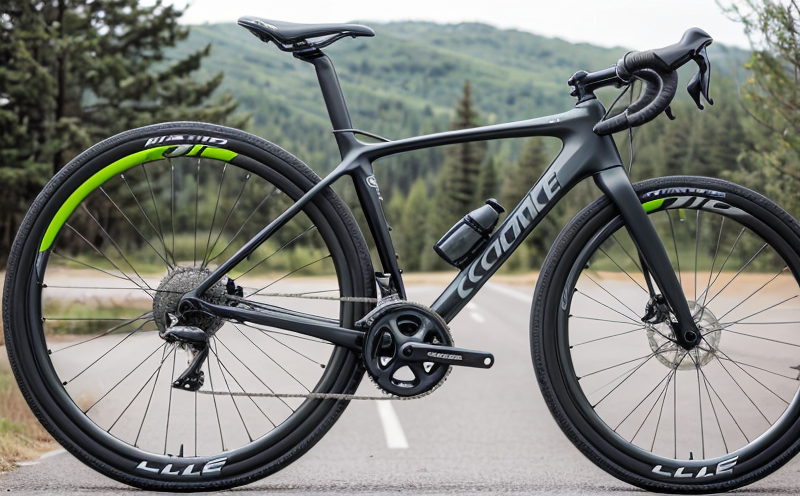IEEE 1188 Cycle Life Testing of VRLA Batteries in Stationary Applications
The IEEE Standard for Cycle Life Test of Valve Regulated Lead Acid (VRLA) Batteries, IEEE Std. 1188-2016, provides a robust methodology to evaluate the cycle life and durability performance of VRLA batteries used in stationary applications such as uninterruptible power supplies (UPS), backup power systems, renewable energy storage, and grid stabilization.
The testing procedure is crucial for ensuring that these batteries meet reliability and performance requirements over extended periods. The test protocol involves subjecting the battery to repeated charge-discharge cycles under specified conditions, monitoring key parameters like capacity retention, voltage stability, internal resistance, and more. This service helps in identifying potential weaknesses early on, enabling manufacturers to optimize designs or improve manufacturing processes.
VRLA batteries are widely used for their compact size, long shelf life, maintenance-free operation, and ability to deliver high power when needed. They play a critical role in ensuring the reliability of stationary applications where uninterrupted power supply is essential. However, these benefits come with a trade-off: they require accurate testing to ensure longevity.
Our laboratory adheres strictly to IEEE 1188-2016 guidelines, offering comprehensive cycle life testing services tailored specifically for VRLA batteries in stationary applications. By following this standard, we provide clients with reliable data that can be used for quality assurance, R&D purposes, and compliance with international regulations.
During the test process, multiple parameters are continuously monitored to assess battery performance throughout the lifecycle. These include open circuit voltage (OCV), terminal resistance, total internal impedance, specific capacity, and state of charge (SOC). Additionally, the number of cycles that a battery can endure before its performance degrades significantly is also evaluated.
For accurate results, proper preparation of the VRLA batteries prior to testing is essential. This involves charging the batteries fully according to specified protocols, ensuring they are at optimal conditions for evaluation. Once prepared, the batteries undergo repeated charge-discharge cycles designed to simulate real-world usage scenarios as closely as possible.
Our state-of-the-art laboratory uses advanced equipment and software tools to ensure precise measurement and recording of all relevant parameters during testing. After each cycle, detailed reports are generated which summarize key findings including any trends observed over time. These reports provide valuable insights into the performance characteristics of individual batteries, helping manufacturers make informed decisions about design improvements or process adjustments.
By leveraging IEEE 1188-2016 as our guiding principle, we offer a robust testing service that not only meets but often exceeds industry standards. Our goal is to provide high-quality data which supports better decision-making processes within organizations working in this field.
Applied Standards
| Standard | Description |
|---|---|
| IEEE Std. 1188-2016 | This document specifies the methodology for performing cycle life tests on valve regulated lead acid (VRLA) batteries used in stationary applications such as UPS, backup power systems, renewable energy storage, and grid stabilization. |
| ISO/IEC 17025:2017 | The international standard for the competence of calibration and testing laboratories. Ensures that our laboratory meets high-quality requirements in conducting tests according to IEEE Std. 1188-2016. |
| ASTM G194-21a | This American Society for Testing Materials (ASTM) standard covers procedures for determining the corrosion resistance of metallic materials, which may be relevant when considering long-term reliability and durability under various environmental conditions. |
| IEC 60896-7:2015 | An International Electrotechnical Commission (IEC) standard that addresses safety aspects related to portable batteries. While not directly related to cycle life testing, it provides important context regarding the overall safety and performance expectations of VRLA batteries. |
Eurolab Advantages
We at Eurolab pride ourselves on offering superior cycle life testing services for VRLA batteries in stationary applications. Our expertise lies not only in adhering strictly to IEEE 1188-2016 but also in providing additional value-added services that enhance the overall quality of our clients' products.
Our highly skilled technicians and state-of-the-art facilities ensure accurate measurements and consistent results, making us a preferred choice among leading manufacturers. We understand the importance of reliable data when it comes to decision-making processes within your organization. Our comprehensive reporting capabilities allow you to easily track trends over time, ensuring that any necessary adjustments can be made promptly.
Moreover, our commitment to continuous improvement means we stay updated with the latest developments in this field. This allows us to offer services that meet evolving industry standards while maintaining a high level of service excellence.
In summary, choosing Eurolab for your VRLA battery cycle life testing needs guarantees you receive top-notch results delivered by experienced professionals using cutting-edge technology and methodologies.
International Acceptance and Recognition
The IEEE 1188-2016 standard has gained significant acceptance within the global community of VRLA battery manufacturers, quality managers, compliance officers, and R&D engineers. Its widespread adoption reflects its reliability as a benchmark for evaluating cycle life in stationary applications.
Many organizations around the world have implemented this standard to ensure their products meet stringent performance criteria before reaching market release stages. By following IEEE 1188-2016 guidelines during development phases, companies can identify potential issues early on and address them proactively.
The recognition of this standard extends beyond North America; it is increasingly being adopted globally due to its comprehensive approach towards testing VRLA batteries for cycle life. This acceptance underscores the importance placed upon ensuring consistent quality across different geographical regions while meeting local regulatory requirements simultaneously.
At Eurolab, we are committed to staying abreast of these international trends and ensuring our services align with current best practices. Our team works closely with clients to understand their specific needs and deliver tailored solutions that comply with relevant standards worldwide.





